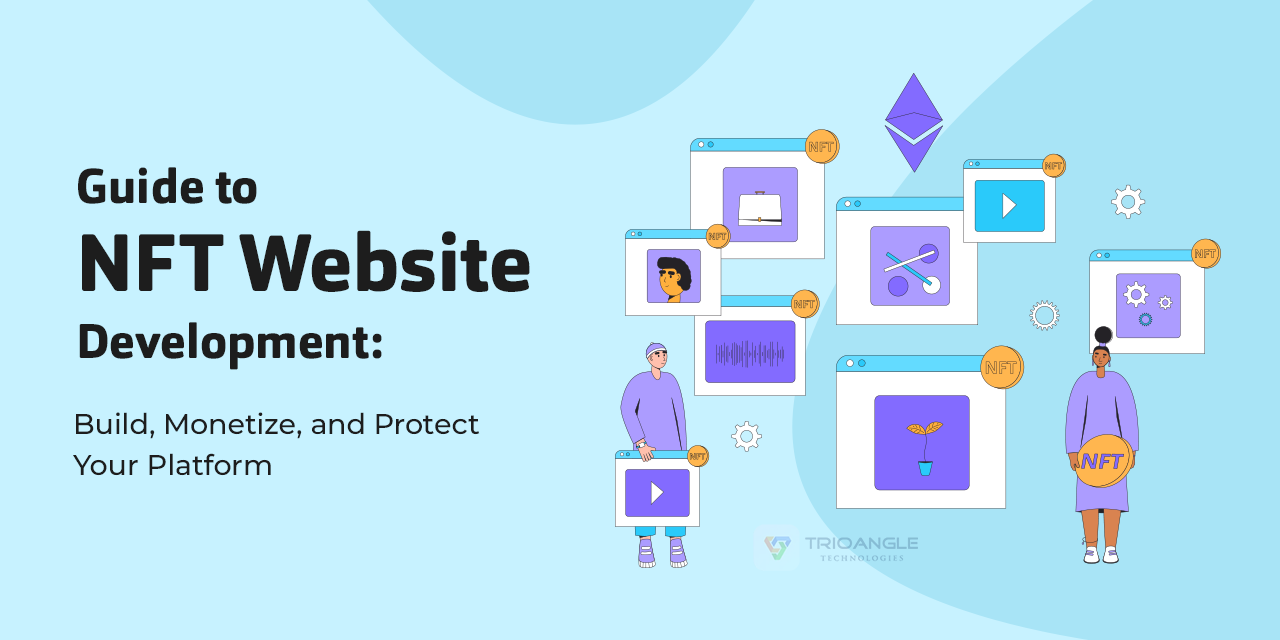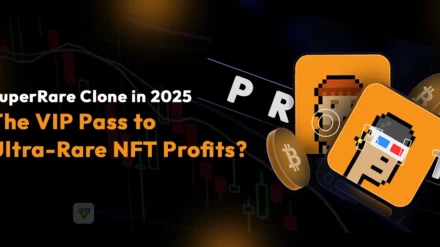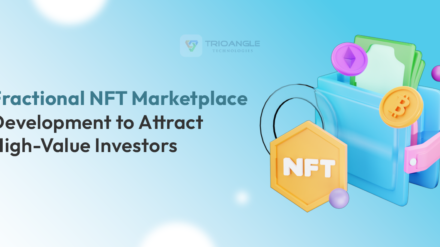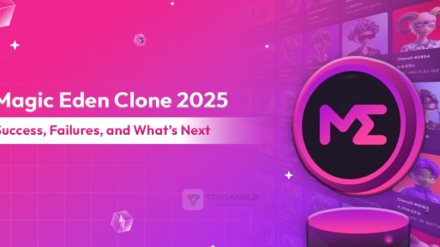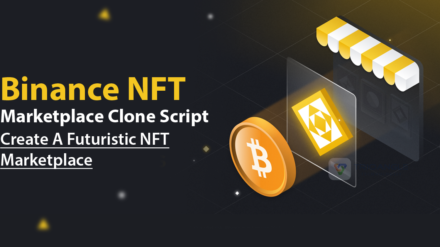Ever Wonder What the Mona Lisa Would Be Worth Digitally? Imagine owning a piece of history digitally. That’s the charm of NFTs, where art, music, gaming, and even memes transform into digital assets with real-world value. This makes NFT website development as feasible one.
But here’s the real kicker: while owning NFTs is cool, creating a platform where people trade them? That’s the game-changer.
NFT Website Development is like building a vault for modern treasures that are secure, robust, and user-friendly. A standout NFT marketplace needs custom features, impeccable design, and top-notch security.
Intrigued? Buckle up! We’ll explore the nitty-gritty of crafting a website as unique as your NFTs. We’ve got you covered from sleek designs that’ll make your digital assets shine to robust functionalities that’ll keep your community hooked.
#1 NFT Website Development: A New Era of Digital Ownership
Remember the NFT winter? Well, it’s officially spring! November 2024 saw a resurgence of NFT activity, with sales surging 57.8% and reaching a six-month high.
The NFT landscape has been bustling with both innovation and challenges as 2024 nears its end.
#Big time goes Big!!! Big Time’s new PvP mode is a testament to the growing popularity of NFT games. With record-breaking engagement and millions of users, the game showcases the potential of NFTs to revolutionize the gaming industry.
#Metaverse Expands!!! The XR & Metaverse Fair in Tokyo highlighted the increasing integration of NFTs into AR and VR experiences. This trend is fueling the need for tailored NFT platforms to facilitate seamless digital asset interactions within these immersive environments.
#Innovation on the Rise!!! The NFT landscape is evolving towards customized solutions. Customised NFT platforms are becoming essential to meet the growing demand for unique digital ownership experiences, from collectibles to in-game assets.
These trends highlight the growing complexity and opportunity within the NFT space, making now an excellent time for you to explore NFT website development to meet evolving market demands.
#2 Building Your NFT Website: A Step-by-Step Blueprint
Let’s break it down…NFT website Development isn’t just coding a platform… it’s about crafting a digital playground where creators, collectors, and traders feel empowered.
Ready to dive in? Here’s the roadmap:
Sketch the Blueprint: What’s Your Vision?
Before you even think of coding, define your niche. Are you targeting art, gaming, or music? Maybe you want a marketplace for niche collectibles? Start by researching your audience and competitors.
Think of this step as drawing your dream house before laying bricks.
Quick Tip: Explore marketplaces like OpenSea and Rarible not to copy, but to identify gaps you can fill.
Choose Your Blockchain: The Heart of Your Platform
Ethereum might be the NFT OG, but alternatives like Polygon (low fees), Solana (speed), and Binance Smart Chain (scalability) are stealing the spotlight.
Choose a blockchain based on your audience’s priorities: cost, speed, or ecosystem compatibility.
Smart Contracts: The Brain Behind NFTs
Smart contracts automate everything from minting to royalty payments. Use frameworks like Solidity (for Ethereum) or Rust (for Solana). This step is critical…any flaws can lead to vulnerabilities. Double down on audits here.
Did You Know? Lazy minting (where NFTs are minted only when sold) is a hot trend. It reduces upfront costs and aligns with eco-conscious values.
Frontend Meets Blockchain: Seamless User Experience
Your website’s design is your first impression. Keep it sleek yet functional. Ensure wallet integration (like MetaMask, and WalletConnect) and responsive design for all devices.
Make it fun! Add interactive features like real-time NFT previews or rarity trackers. Who doesn’t like a little sparkle?
Secure Your Platform: A Non-Negotiable Step
The NFT space is rife with hacks. Use SSL, multi-factor authentication, and rigorous testing to keep users safe. Employ Web3 security measures, like transaction simulations, to avoid phishing traps.
Real Insight: The recent Kraken NFT marketplace closure cited “security scalability issues” among reasons for its downfall. Don’t let this happen to you.
Test Like Your Platform’s Life Depends on It (It Does!)
Simulate heavy traffic, test minting, and validate wallet transactions. Early adopters love exclusive access, so this can also build hype.
Post-Launch Hustle: Updates and Community Building
Launching is just the start. Regular updates, feature rollouts, and an engaged community are key to long-term success. Host giveaways, AMA sessions, and collaborations to keep the buzz alive.
Final Note: Don’t Just Build—Innovate!
The NFT market is evolving. Consider adding features like fractional ownership, social trading, or AR/VR integrations. Your website shouldn’t just be functional… it should be memorable.
Are you ready to leave your digital mark? Let’s turn those ideas into assets!
#3 Legal Essentials: Protecting Your NFT Platform and Users
So, you’re planning to launch an NFT website? Great idea! But before you mint that first digital masterpiece, let’s talk about the elephant in the room: legalities.
Think of this as building a castle….if the foundation (your legal framework) isn’t solid, the whole thing could crumble.
Intellectual Property (IP): Who Owns What?
NFTs are often misunderstood as granting full ownership of an asset. In reality, most NFT transactions transfer rights to the token, not the underlying artwork or content. As a platform owner, you must clarify:
- What rights do buyers get: Can they reproduce or resell the artwork?
- What rights creators retain: Are they entitled to royalties on future sales?
Pro Tip: Include terms that ensure creators grant the rights to tokenize their content. Without this, you risk hosting unauthorized or stolen work a PR and legal nightmare.
Compliance with Local Laws: Navigating the Legal Maze
NFT platforms operate globally, but laws differ by region.
- Securities Laws: Some NFTs, like fractional ownership tokens, might be classified as securities. Ignoring this can invite regulatory scrutiny.
- Taxation: Ensure users understand tax implications in their jurisdictions. A simple guide or calculator can save them headaches and win trust.
- Anti-Money Laundering (AML): Include identity verification (KYC) and transaction monitoring to comply with international regulations.
Real Insight: The SEC’s ongoing scrutiny of crypto projects highlights why legal due diligence is non-negotiable.
User Protection: Security Meets Transparency
Users need to trust your platform. That means safeguarding their assets and data while being upfront about risks.
- Terms of Service: Spell out risks volatile pricing, potential losses, and even marketplace downtimes.
- Data Privacy: Collect only what’s necessary and secure it using encryption. GDPR compliance is essential if you have EU users.
- Fraud Prevention: Implement measures to spot fake NFTs and phishing attempts, like watermarking content or manual reviews for high-value tokens.
Dispute Resolution: What Happens When Things Go Wrong?
NFTs can be contentious think copyright disputes or marketplace glitches. Offer a clear dispute resolution process, like mediation or binding arbitration, to handle issues efficiently.
Why This Matters
The NFT market is under increasing regulatory and public scrutiny. Platforms that prioritize compliance and user trust will not only avoid legal pitfalls but also attract a more loyal user base.
Ready to mint your way into success? Start with a rock-solid legal strategy…it’s the invisible backbone of every thriving NFT marketplace.
#4 Revenue Models for NFT Website Development: Turning Clicks into Coins
The NFT space is bursting with monetization opportunities, and your platform can be at the heart of it. Ready to maximize your earnings?
Let’s get into the strategies.
Transaction Fees: The Evergreen Revenue Stream
Every time an NFT changes hands on your platform, you take a slice. It’s simple, predictable, and scalable.
- How it works: Charge a percentage per transaction. Both buyers and sellers are conditioned to this model.
Insight: Platforms like OpenSea generate millions monthly from these fees alone, proving this is a reliable revenue backbone.
Pro Tip: Offer tiered fees. High-volume traders could enjoy lower rates, encouraging loyalty.
Premium Memberships: Unlocking VIP Experiences
Imagine offering exclusive perks like early access to high-profile NFT drops or lower transaction fees for premium users.
- What to offer: Priority listings, personalized support, or access to private collections.
Tip: Platforms that gamify memberships with levels (think Bronze, Silver, and Gold tiers) see higher user engagement.
Minting Fees: Where Creators Pay to Play
Every creator needs to mint their NFTs. Charging a fee for this service is a straightforward way to generate revenue.
- How to stand out: Offer batch minting or lazy minting (on-demand minting at the time of sale) to reduce upfront costs for creators while monetizing at the point of success.
Tip: Platforms adopting eco-friendly blockchains, like Tezos or Polygon, attract creators seeking affordable minting solutions.
Exclusive Drops: The Hype Generator
Partner with celebrities, brands, or top artists for exclusive NFT collections. These drops create buzz and attract a surge of transactions.
- How it works: Either take a percentage of sales or charge a flat partnership fee.
Insight: Adidas’ NFT drop on OpenSea generated $23 million in just hours, proving that hype sells fast.
Advertising and Sponsored Content: Monetize Traffic
If your platform gains traction, brands will pay for exposure. Think banner ads, sponsored NFT collections, or even branded NFTs.
- What to avoid: Overloading your platform with ads. Maintain a balance to keep the user experience smooth.
Tip: Curated sponsored campaigns such as partnerships with Metaverse projects can align perfectly with your user base.
Secondary Market Royalties: The Gift That Keeps Giving
Enable royalty features where creators get a cut every time their NFT resells. Take a small commission on these transactions.
Secondary markets are booming. Artists and creators appreciate platforms that prioritize recurring royalties, creating a win-win scenario.
By combining these revenue models strategically, you not only maximize earnings but also your NFT Website Development attracts users, creators, and collectors alike.
So, why settle for one revenue stream when you can have them all?
Your Partner for NFT Website Development Success: Trioangle
When it comes to transforming your NFT vision into a robust, feature-packed platform, Trioangle, an NFT Marketplace Development Company is the name to know. With cutting-edge expertise and a proven track record in NFT marketplace development, Trioangle doesn’t just build platforms they craft experiences. From seamless blockchain integration to user-centric designs, they specialize in delivering solutions that scale, secure, and shine.
Looking to innovate with lazy minting, exclusive drops, or multi-chain capabilities? Trioangle’s tailored approach ensures your platform is as unique as your business goals.
Ready to stand out in the NFT universe? Trioangle is here to help you shine.

